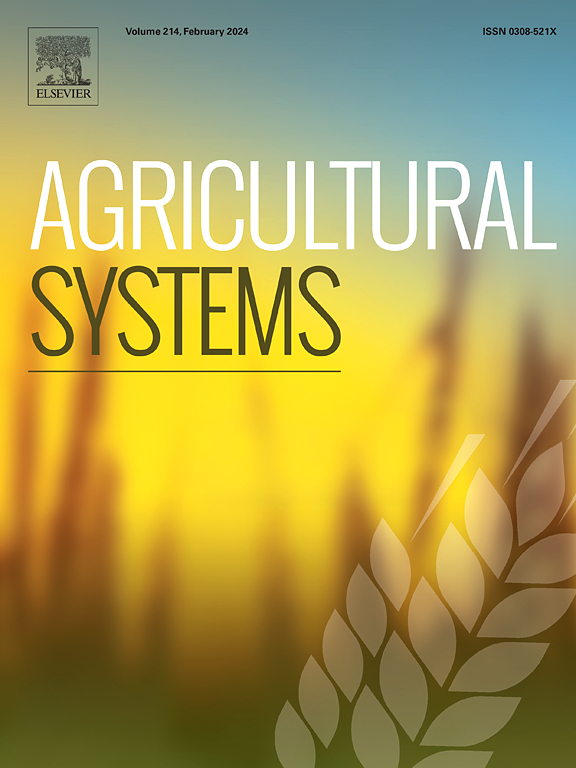Constraints and promising interventions to strengthen fish seed systems in Sub-Saharan Africa: Evidence from Ghana
IF 6.1
1区 农林科学
Q1 AGRICULTURE, MULTIDISCIPLINARY
引用次数: 0
Abstract
CONTEXT
Aquaculture has surpassed capture fisheries in terms of production and is among the fastest growing food sectors. It has great potential to contribute to food security and nutrition, poverty reduction, jobs, and environmental sustainability. Fish seed is increasingly considered to be a major driver and disabler of aquaculture development. However, little is known about how fish seed systems operate, their challenges and opportunities, or entry points for strengthening them.
OBJECTIVE
This study analyzes primary data on the challenges and opportunities faced by various actors along the fish seed chain, documents the lessons from a fish seed project (Ghana Tilapia Seed Project, 2019–2022), and provides an analysis of entry points for strengthening fish seed systems.
METHODS
Using an analytical framework that tracks germplasm base, seed production and quality, seed availability and distribution, and the information flow along the fish seed value chain, we analyze the case of Ghana, the top producer of farmed tilapia in sub-Saharan Africa. The study uses a mixed-methods approach, including value chain analysis, action-oriented research methods, and statistical analysis of survey data.
RESULTS AND CONCLUSIONS
Findings indicate that the initial rapid growth in tilapia production in Ghana was partly due to an improved local strain released in 2004; however, the recent stagnation is largely caused by seed-related issues (poor maintenance and improvement of germplasm base, seed quality and availability, lack of information and coordination, and lack of enforcement of regulations). This study highlights the successes and lessons learned from the Ghana Tilapia Seed Project on broodstock distribution, training on fingerling production, establishment of nurseries, and training of fish farmers. The lessons highlight the need for policy changes and capacity building related to strain development and broodstock management.
SIGNIFICANCE
These findings fill the large gap in evidence on the functioning of fish seed systems and how to strengthen them. They can directly inform ongoing country-level efforts and programs aiming to develop aquaculture.

加强撒哈拉以南非洲鱼类种子系统的制约因素和有希望的干预措施:来自加纳的证据
水产养殖的产量已超过捕捞渔业,是增长最快的粮食部门之一。它在促进粮食安全和营养、减贫、就业和环境可持续性方面具有巨大潜力。鱼类种子越来越被认为是水产养殖发展的主要推动力和障碍。然而,人们对鱼类种子系统的运作方式、面临的挑战和机遇以及加强这些系统的切入点知之甚少。
本文章由计算机程序翻译,如有差异,请以英文原文为准。
求助全文
约1分钟内获得全文
求助全文
来源期刊

Agricultural Systems
农林科学-农业综合
CiteScore
13.30
自引率
7.60%
发文量
174
审稿时长
30 days
期刊介绍:
Agricultural Systems is an international journal that deals with interactions - among the components of agricultural systems, among hierarchical levels of agricultural systems, between agricultural and other land use systems, and between agricultural systems and their natural, social and economic environments.
The scope includes the development and application of systems analysis methodologies in the following areas:
Systems approaches in the sustainable intensification of agriculture; pathways for sustainable intensification; crop-livestock integration; farm-level resource allocation; quantification of benefits and trade-offs at farm to landscape levels; integrative, participatory and dynamic modelling approaches for qualitative and quantitative assessments of agricultural systems and decision making;
The interactions between agricultural and non-agricultural landscapes; the multiple services of agricultural systems; food security and the environment;
Global change and adaptation science; transformational adaptations as driven by changes in climate, policy, values and attitudes influencing the design of farming systems;
Development and application of farming systems design tools and methods for impact, scenario and case study analysis; managing the complexities of dynamic agricultural systems; innovation systems and multi stakeholder arrangements that support or promote change and (or) inform policy decisions.
 求助内容:
求助内容: 应助结果提醒方式:
应助结果提醒方式:


